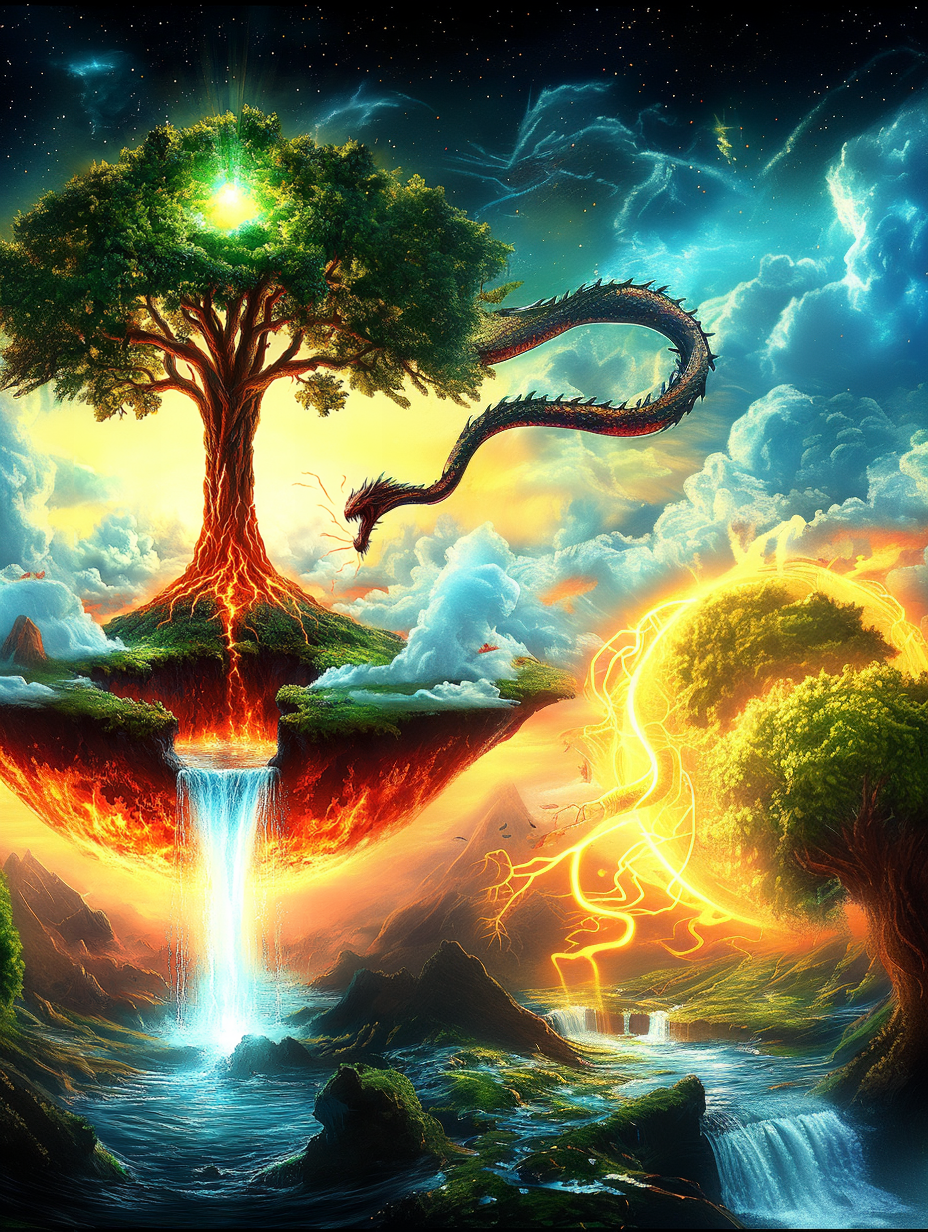The Tree of Life: From Eden’s Fall to Revelation’s Restoration!
- BeTheFire

- Oct 14, 2024
- 5 min read
Correlations Between Genesis and Revelation Series
The Tree of Life (Genesis 2:9) and the New Tree of Life (Revelation 22:2)

There are many profound correlations between the events of creation in Genesis and the end-time events described in Revelation. These parallels highlight the overarching narrative of how sin has undone God's perfect creation, only for Him to restore and perfect it in the final days. Beyond the seven trumpets, which signal the unraveling of the original order, other significant parallels illustrate this cosmic reversal and ultimate restoration. Let’s explore a few:
The Tree of Life: From Eden’s Fall to Revelation’s Restoration 🌳✨
The Tree of Life in Eden (Genesis 2:9) In the Garden of Eden, God placed the Tree of Life at the heart of creation. This tree was more than just a physical plant—it was a profound symbol of eternal life, divine sustenance, and humanity’s unhindered relationship with God. It was the source of life that would sustain Adam and Eve in perpetual fellowship with their Creator. They could freely partake of any tree except the tree of life, and as long as they remained obedient, they would continue to live without end, in harmony with both God and creation.
However, in the Garden of Eden, another presence lurked—the serpent, who embodied the forces of evil and rebellion. His goal was not just to introduce sin, but to sow seeds of doubt in the minds of Adam and Eve. He cast suspicion on God's goodness and the truth of His word. He subtly questioned God's command, saying, "Did God really say you must not eat from any tree in the garden?" (Genesis 3:1). He led Eve to doubt God's intentions, suggesting that God was withholding something good from them.
The serpent, a cunning architect of chaos, infiltrated the Eden, whispering doubts and lies, corrupting the once-perfect paradise into a wasteland of sin and suffering.The serpent's deception was effective. When Eve and then Adam took of the forbidden fruit, they chose to believe the lie over the truth. This act of disobedience resulted in their spiritual death—their relationship with God was severed, and they were cast out of the garden. The Tree of Life—the symbol of eternal life—was now out of reach, and access to the divine sustenance was lost. Sin had entered the world, bringing with it the curse of death, suffering, and separation from God. This marked the beginning of a long history of brokenness, one that would only be fully restored through the redemption of Christ.
The New Tree of Life in Revelation (Revelation 22:2) Fast forward to the end of time, when God will restore all things in the New Jerusalem, where His perfect plan will finally come to fruition. In Revelation 22:2, we see a reappearance of the Tree of Life—but this time, it’s not in the Garden of Eden, where it was lost. It stands in the heart of the New Heaven and New Earth, offering its fruit to the redeemed, representing the complete restoration of what was lost in the garden. It will bear fruit every month, providing healing for the nations. No longer will humanity be barred from its life-giving fruit, because the curse of sin and death will have been fully reversed.
The Tree of Life in the New Jerusalem is not merely a physical tree—it is symbolic of God’s full and final restoration of the eternal life He intended for humanity from the beginning. In this restored world, there will be no more separation between God and humanity. The redeemed will have full access to the tree, once again partaking in eternal life, unbroken fellowship, and divine provision. What was once lost due to the fall of mankind will now be regained, not only physically but spiritually as well. The curse that was brought upon creation through sin will be removed completely, and death itself will be no more.
The cross, a barren, desolate place, became the fertile ground for the seeds of salvation. The blood of the divine architect, poured out upon this sacrificial altar, became the life-giving water that would nourish the garden of redemption.
The Serpent’s Role: Doubt and Separation in the Fall The serpent’s role in the garden is significant in understanding the broader narrative of creation and restoration. Through his deceptive questioning, he introduced doubt in Adam and Eve’s minds, causing them to question God's goodness and His Word. This moment of doubt led to their disobedience, which ultimately resulted in their expulsion from the Garden of Eden. The serpent’s deceit severed their direct access to the Tree of Life and brought about the curse of death and separation from God.
Interestingly, the restoration of the Tree of Life in Revelation can be seen as a direct answer to the serpent’s deception. While the serpent sowed doubt and led to the loss of eternal life, God, in His grace and mercy, plans a full reversal of that curse. The New Tree of Life in the New Jerusalem is a mirror image of what was lost in the Garden. Where the serpent introduced doubt and led to spiritual death, God’s redemption in Christ restores not just the physical access to the Tree of Life but also the restoration of trust in God's goodness and truth. In the end, what the serpent intended for evil, God has turned to good, and the eternal life that was lost due to the serpent's deception is restored for all who are redeemed.
The serpent transforms from being a deceiver in Genesis to a defeated and banished enemy in the final chapters of Scripture. The serpent, once the agent of doubt and rebellion in Eden, is ultimately shown to be powerless in the face of God's final restoration and victory.Just as the fall of humanity began with a moment of doubt and deception, the restoration begins with a return to trusting in God’s promises and His ultimate goodness. The serpent’s question, "Did God really say...?" will be met with a resounding answer in the New Heaven and Earth: "Yes, God did say, and He has fulfilled it." Through Christ, the ultimate victory over sin and death is secured, and the Tree of Life, once barred from humanity, is now freely offered to all who are in Christ.
The Tree of Life, from its introduction in Genesis to its restoration in Revelation, is a powerful symbol of God's eternal plan for humanity. It represents the promise of eternal life, unbroken fellowship with God, and divine provision. The serpent's deception in the Garden of Eden led to the loss of access to the Tree of Life, but God's redemptive plan, culminating in the work of Christ, has restored this promise.
And so, just as humanity began in a paradise, tainted by sin, it will end in a paradise, restored to perfection, a testament to the divine architect's unwavering love and infinite patience.
© 2024 Amanda Allen. All rights reserved.
Please share this message with a hurting world and respectfully direct readers back to Kingdom Revelations. www.KingdomRevelations.com







.jpg)



.jpg)




Comments